Trout Lake A Unique Northern Wisconsin Lake and Fisherys
Introduction
Text-to-speech Audio
Trout Lake stands out as one of the largest and deepest lakes in northern Wisconsin. People have been drawn to Trout Lakes' natural beauty and diverse resources for thousands of years. Trout lakes' fisheries helped support the Trout Lake band of the Ojibwe for generations at their traditional village at the outlet of the Trout River. Early non Indigenous visitors and residents were stunned by the fantastic fishing along Trout Lake that attracted both sport fishing and market fishing.
With natural beauty, excellent fishing and close proximity to rail transportation, Trout Lake emerged as a leading resort destination. Resort owners, guides and local businesses discovered that local fisheries spurred tourists to flock to the Northwoods.
Trout Lake stood apart from other northern lakes with a rare deep water fishery that held a genetically unique species of lake trout. Advertisers, promoters and magazines called these large, deep water fish "salmon trout,” and folks were drawn to fish Big Trout Lake. Actually, Trout Lakes' fishery has numerous complex elements that make this body of water a special destination.
Importantly, scientists, tribal communities and state government have been conducting research to better guide fishery management practices.
A DNR sign erected in 2023 details much of the content found in this Clio entry and is located on Cathedral Point on Trout Lake. See the map below.
Images
Trout Lake trophy
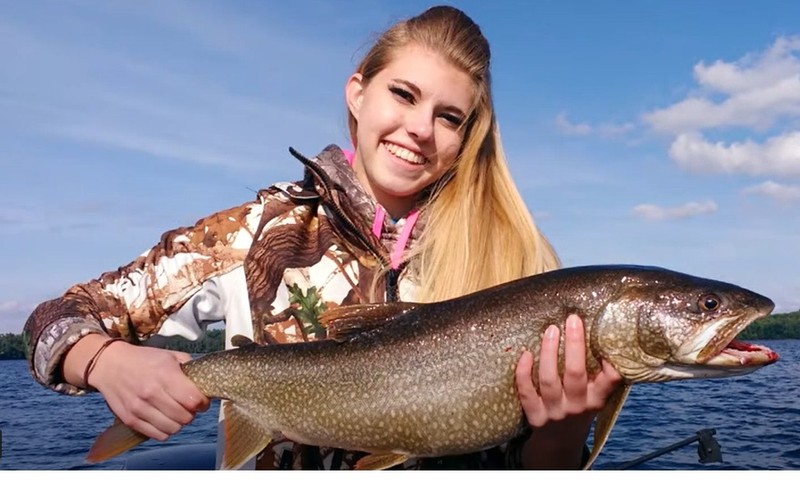
Wisconsin Conservation Commission stripping walleye eggs for fish hatchery
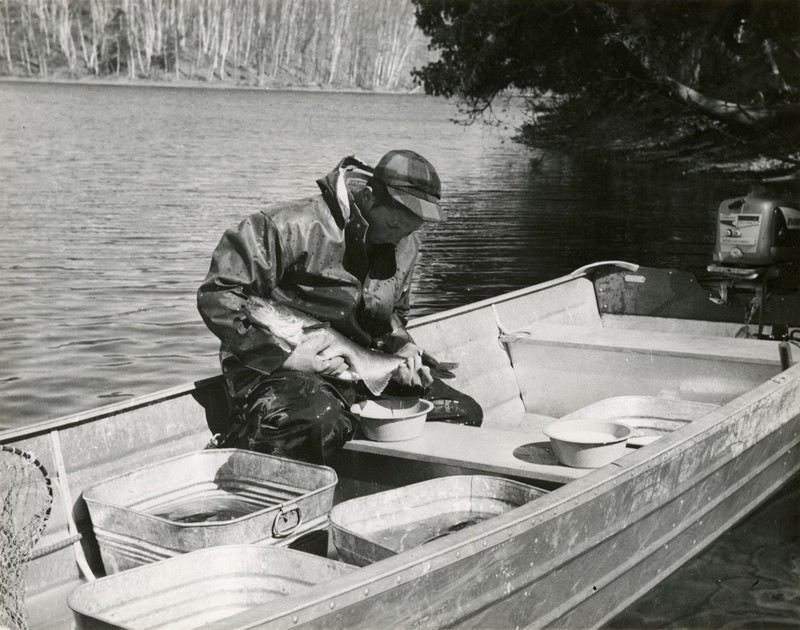
Walleye eggs being prepared for the fish hatchery
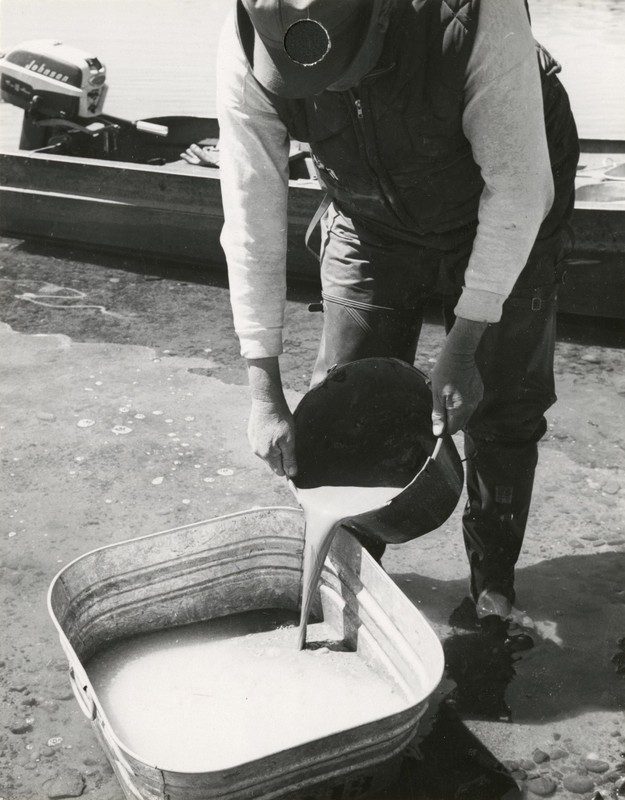
Old survey gill nets on Trout Lake

Badger #2 Fisheries Railroad car for stocking fry and fingerlings

Lake Trout caught on Trout lake
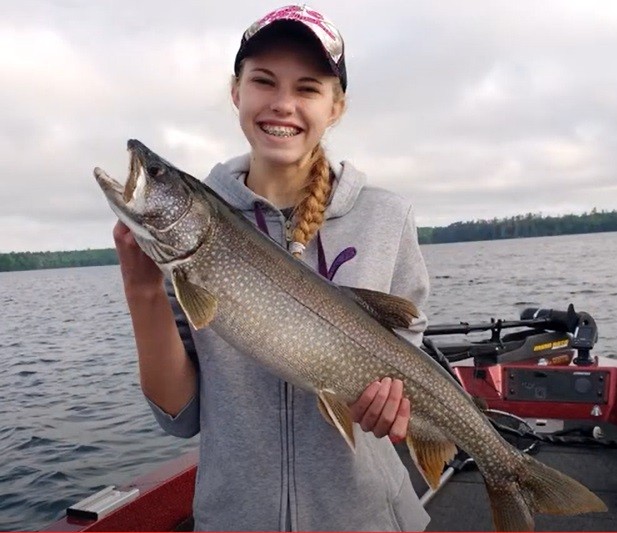
Deepwater fish found on Trout Lake
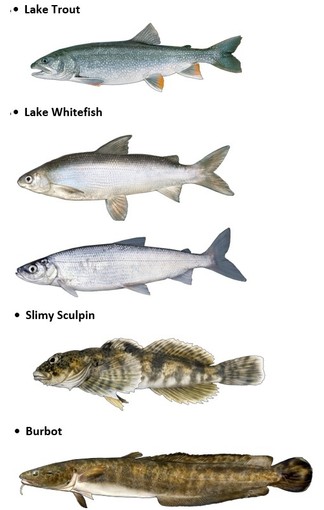
Trophy lake trout from Big Trout Lake!
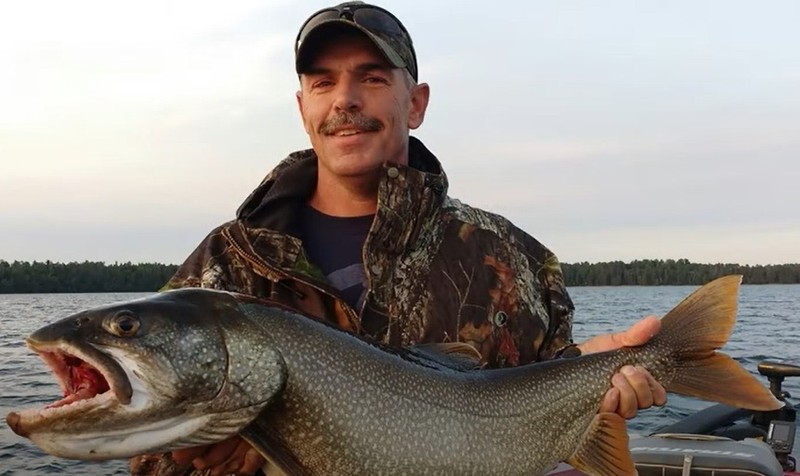
Contrast of gill nets and fyke nets

Backstory and Context
Text-to-speech Audio
Trout Lake, located in the heart of the Northern Highland and American Legion State Forest, is one of the deepest inland lakes (117 feet deep) in Wisconsin and largest lake in Vilas County. Trout Lake is one of only two inland lakes in Wisconsin that contains a genetically unique strain of lake trout. Research completed in 2005 confirmed the uniqueness of the Trout Lake strain of lake trout. This strain has persisted, with some recent help from stocking, in Trout Lake since the receding of the glaciers approximately 11,000 years ago.
Trout Lake contains a unique deep-water assemblage of fish species, including: lake trout, lake whitefish, cisco, slimy sculpin and burbot. Trout Lake has a long history of fishery management dating back to 1931. Gamefish population and spawning surveys have been focused on walleye, muskellunge and lake trout. Lake trout gill net surveys took place almost annually from 1956 to 1987. In 1995, several near shore lake trout spawning areas were discovered that allowed the use of fyke nets. Data gathered during netting surveys helps fishery management by assessing population size, length distribution, growth, etc. Stocking is another tool used to manage the lake trout population in Trout Lake. Lake trout are spawned, raised at hatcheries, and stocked back into Trout Lake as well as a select few other lakes in Wisconsin.
In 1889, news of Big Trout Lakes' amazing “salmon trout” traveled quickly through publications like The American Angler. Big Trout Lakes' fishery was prized by anglers seeking trophies and market fishermen selling to lumber camps or railroads. Stories of market fishing of lake trout from pioneer Robert Loveless illustrates the excessive harvest of fish on Trout Lake,...”caught through the ice 8 hundered Pounds of trout and Sold Most all of them to the loggin Camps..." Several other guides were also market fishing on Trout Lake in the early 1890s.
In September of 1913, the Wisconsin Fish Commission had a second wooden fishery railroad car built named “Badger #2.” This specialized railroad car carried steel tanks to transport fish via rail to streams, rivers and lakes. Since the late 19th century, Wisconsin Department of Fisheries had transported fish fingerlings and fry to communities wishing to bolster their fisheries. Today, some of the genetically unique lake trout from Trout Lake are transported to select lakes by specialized trucks.
The Wisconsin DNR fishery program conducts frequent surveys, captures eggs and milt, and tags fish to support ongoing research along Cathedral Point each fall. Early on, gill nets, which were more harsh on lake trout, have been replaced with more gentle fyke nets that allow easy capture and release of fish.
Wisconsin State Forester E. M. Griffith dedicated 12 pages of the 1909-1910 Wisconsin State Forester's Report to, "THE INTIMATE RELATION OF FOREST COVER TO STREAM FLOW.” In 1911, Griffith led the movement to create the headquarters for Wisconsin State Forestry on Trout Lake. Griffith's forestry models and practices have contributed to the clarity and quality of water along Trout Lake and throughout Wisconsin.
Trout Lake is within the ceded territory of Ojibwe, and tribal fish harvest takes place annually according to Ojibwe sovereignty and tribal rights. The DNR and Ojibwe collaborate to establish a safe total allowable catch to ensure fisheries are sustainable.
Importantly, scientists have been conducting research and fishery management for over a century at Trout Lake. Since 1901 a state fish hatchery operated just down the road in Woodruff, which stocked and managing area lakes. In 1925, the UW Madison Limnology program established a research station on the south end of Trout Lake. Today, the DNR, UW Madison Limnology Research Station at Trout Lake, Lac du Flambeau Fisheries and Fish Culture Program, and Great Lakes Indian Fish and Wildlife commission all influence management practices on Trout Lake.
Sources
ED. Lake Trout from Trout Lake, Wis. The American Angler. May 25th, 1889.
Loveless, Robert . Robert Loveless Journal 1891-1925, Manitowish Waters Historical Society . March 14th, 1925. Accessed June 16th, 2024. https://www.mwhistory.org/robert-loveless-journal-1891-1925/.
Interview with Tim Tobias and Eric Wegleitner, Fisheries Biologist , Wisconsin Department of Natural Resources. Woodruff, Wisconsin. 2022.
Interpretive sign. Tim Tobias, Eric Wegleitner, Fisheries Biologist Wisconsin Department of Natural Resources. Edited by Jackie Bowe. Woodruff, Wisconsin.2023.
State Board of Forestry . Report of the State Forester of Wisconsin 1909-1910, Manitowish Waters Historical Society . January 10th, 1910. Accessed July 5th, 2024. https://ppolinks.com/mwhistory/1909-10%20Report_of_the_State_Forester.pdf.
Wisconsin DNR. Lake Trout Stocking Program, Trout Lake, YouTube. October 2nd, 2019. Accessed June 16th, 2024. https://www.youtube.com/watch?v=LPGEgLHf__0.
Wisconsin DNR. Lake Trout Stocking Program, Trout Lake, YouTube. October 2nd, 2019. Accessed June 16th, 2024. https://www.youtube.com/watch?v=LPGEgLHf__0.
UW Digital Collection DNR
UW Digital Collection DNR
UW Digital Collection DNR
Antigo Daily Journal, Prime Time. June, 2017
Wisconsin DNR. Lake Trout Stocking Program, Trout Lake, YouTube. October 2nd, 2019. Accessed June 16th, 2024. https://www.youtube.com/watch?v=LPGEgLHf__0.
DNR Woodruff, WI
Wisconsin DNR. Lake Trout Stocking Program, Trout Lake, YouTube. October 2nd, 2019. Accessed June 16th, 2024. https://www.youtube.com/watch?v=LPGEgLHf__0.
DNR Trout Lake sign project
